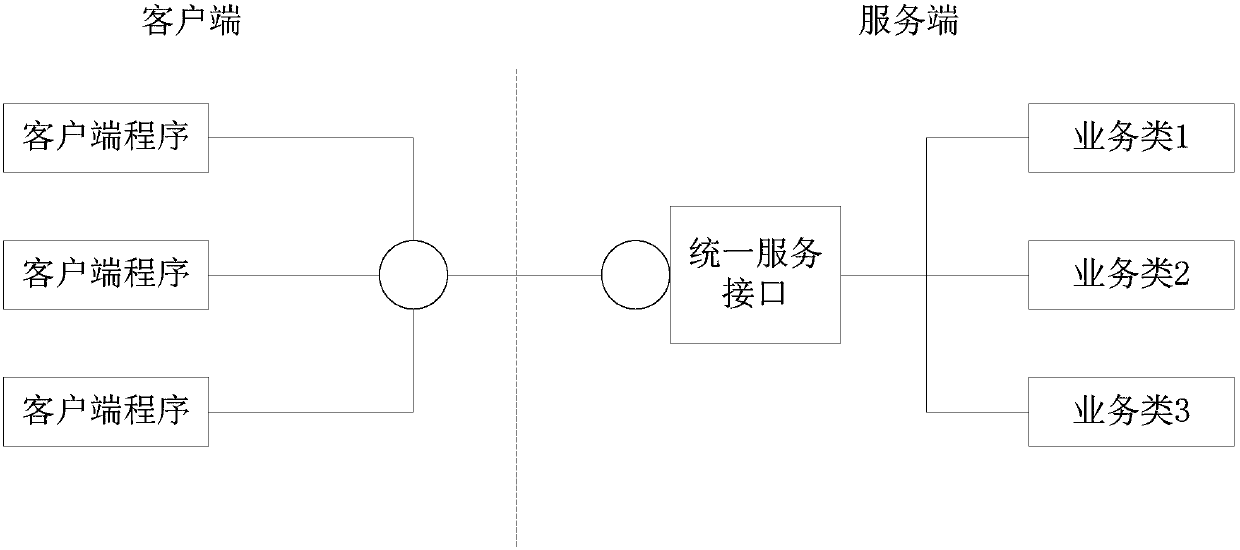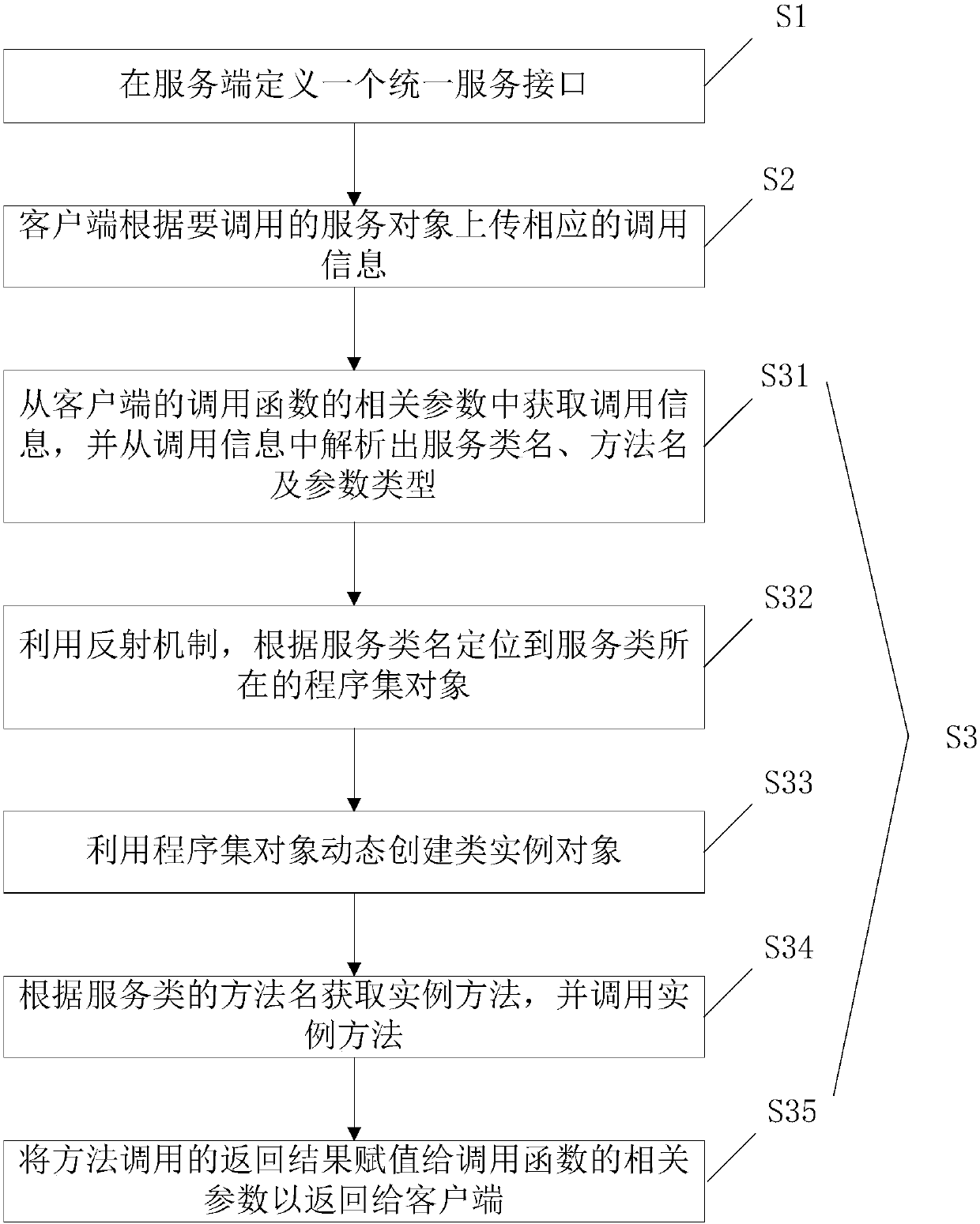Remote object calling method and system
A remote object and information calling technology, applied in the field of distributed services, can solve problems such as development language limitations, low service network performance, and difficult maintenance, and achieve the effects of flexible expansion, high transmission efficiency, and simple maintenance
- Summary
- Abstract
- Description
- Claims
- Application Information
AI Technical Summary
Problems solved by technology
Method used
Image
Examples
Embodiment Construction
[0033] In order to have a clearer understanding of the technical features, purposes and effects of the present invention, the specific implementation manners of the present invention will now be described in detail with reference to the accompanying drawings.
[0034] refer to figure 1 , is a schematic diagram of the structure of the remote object calling system of the present invention.
[0035] A remote object invocation system generally includes a client and a server. Usually, when a client accesses a business service on the server, a service interface needs to be defined for this business development. However, in a complex system, many business service modules are often involved, so , each time a business service is added, a new service interface needs to be defined, which requires maintenance of a large number of business service interfaces, which is extremely inconvenient for system expansion and maintenance.
[0036] In order to solve the above problems, the present in...
PUM
 Login to View More
Login to View More Abstract
Description
Claims
Application Information
 Login to View More
Login to View More - R&D
- Intellectual Property
- Life Sciences
- Materials
- Tech Scout
- Unparalleled Data Quality
- Higher Quality Content
- 60% Fewer Hallucinations
Browse by: Latest US Patents, China's latest patents, Technical Efficacy Thesaurus, Application Domain, Technology Topic, Popular Technical Reports.
© 2025 PatSnap. All rights reserved.Legal|Privacy policy|Modern Slavery Act Transparency Statement|Sitemap|About US| Contact US: help@patsnap.com


